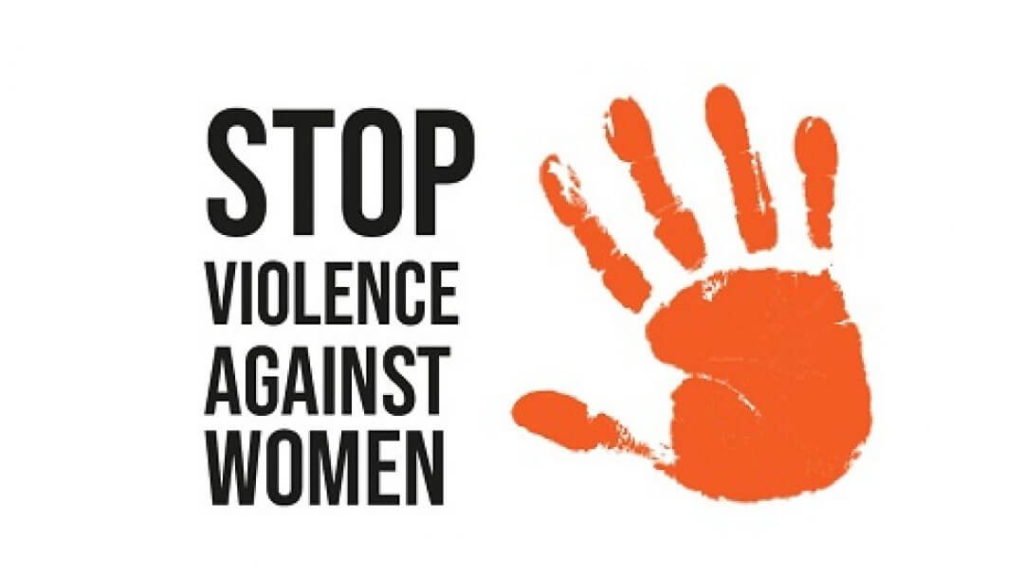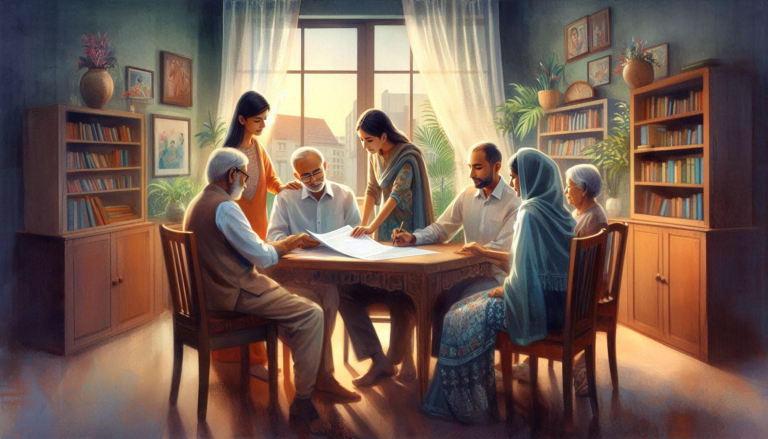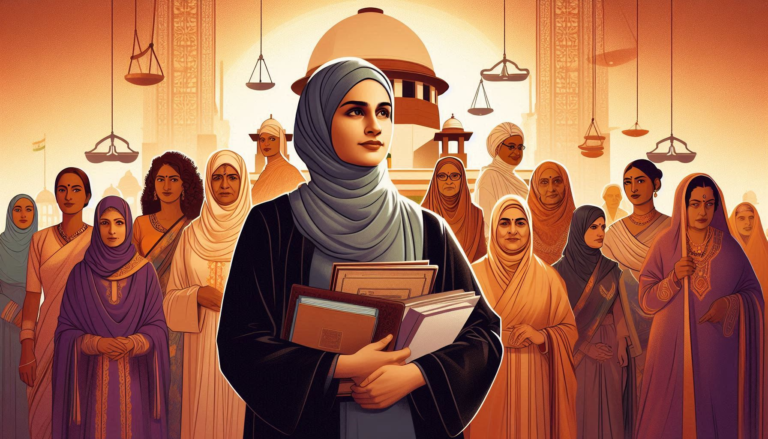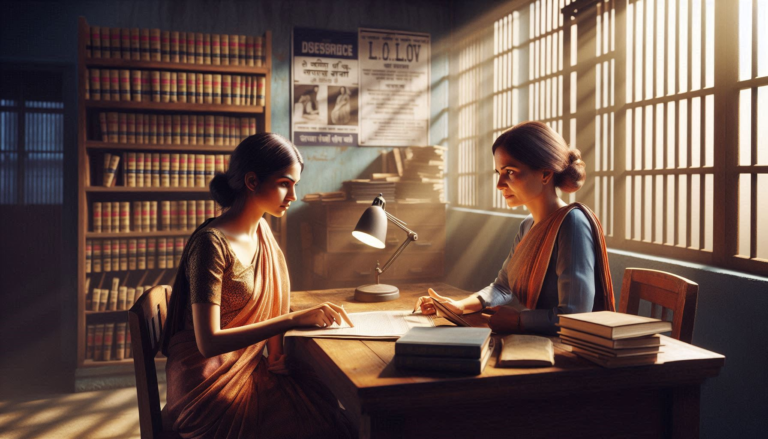
ABSTRACT
Domestic violence continues to be one of the most pervasive yet underreported violations of human rights in India, transcending socio-economic and cultural boundaries. Despite progressive legislation such as the Protection of Women from Domestic Violence Act, 2005 (PWDVA) which aims to provide protection, residence, maintenance, and custody rights to victims implementation remains inconsistent across states. The persistence of patriarchal attitudes, institutional apathy, and lack of awareness among victims and law enforcement personnel have created a significant gap between law and lived reality.
This paper critically examines the effectiveness of existing legal remedies for domestic violence survivors through a multidisciplinary framework encompassing legal, social, and institutional perspectives. It explores how the judiciary, police, and non-governmental organizations (NGOs) collaborate to ensure protection, relief, and rehabilitation, while identifying systemic failures such as procedural delays, inadequate infrastructure, and insufficient coordination among agencies. By analysing landmark judgments, policy gaps, and real-world case data, the paper underscores how formal legal frameworks often fall short in addressing the complex socio-cultural dimensions of domestic abuse.
Ultimately, the study argues that while India’s domestic violence laws are progressive on paper, their success depends on active enforcement, survivor-centered justice mechanisms, and community-level awareness. Strengthening institutional accountability, promoting gender sensitization, and ensuring timely access to justice are essential to transform legal protections into meaningful empowerment for women beyond the four walls of their homes.
INTRODUCTION
Domestic violence is not merely a private dispute rather it is a violation of fundamental human rights and constitutional guarantees. In India, despite rapid modernization, patriarchal norms often confine women to abusive domestic settings. According to the National Family Health Survey (NFHS-5, 2019–21), nearly 29% of ever-married women aged 18–49 have experienced physical, sexual, or emotional violence by their partners.
The Protection of Women from Domestic Violence Act (PWDVA), 20051 was enacted to provide civil remedies beyond criminal prosecution. Unlike Section 498A of the Indian Penal Code (IPC), which focuses on cruelty by the husband or his relatives, the PWDVA recognizes broader forms of abuse—physical, sexual, verbal, emotional, and economic.
However, the true measure of its success lies not in legislative intent but in practical enforcement. This paper explores how well India’s institutions – courts, police, and NGOs translate these legal promises into lived justice.
LEGAL FRAMEWORK FOR ADDRESSING DOMESTIC VIOLENCE IN INDIA
India’s legal response to domestic violence rests on a combination of criminal, civil, and constitutional provisions aimed at protecting women from abuse and ensuring access to justice. Together, these laws establish a comprehensive framework that recognizes domestic violence not merely as a private matter but as a public and legal wrong.
Section 498A of the Indian Penal Code (IPC)2
Section 498A, introduced in 1983, criminalizes cruelty by a husband or his relatives towards a married woman. The term “cruelty” includes both physical and mental harassment, particularly when it is linked to demands for dowry or causes grave injury or danger to life and health. It is a cognizable and non-bailable offence, allowing police to arrest without a warrant. This provision aims to deter domestic abuse and hold perpetrators accountable, though it has occasionally raised debates regarding misuse. Nonetheless, it remains a crucial legal safeguard for women subjected to marital cruelty.
The Dowry Prohibition Act, 19613
The Dowry Prohibition Act seeks to eliminate the social evil of dowry by making the giving, taking, or demanding of dowry a punishable offence. It also addresses cases of dowry harassment and dowry-related deaths, recognizing the economic and emotional exploitation that dowry practices perpetuate. Despite strict penalties, enforcement challenges and deep-rooted social norms continue to hinder the Act’s full effectiveness. However, it serves as an essential complement to Section 498A in combating violence and coercion arising from dowry demands.
The Protection of Women from Domestic Violence Act, 2005 (PWDVA)
The PWDVA represents a major shift in India’s approach to domestic violence by providing civil remedies in addition to criminal sanctions. It offers a broad and inclusive definition of “domestic violence,” encompassing physical, sexual, verbal, emotional, and economic abuse. The Act empowers women to seek protection orders, residence rights, monetary relief, and custody orders from a Magistrate. Importantly, it also allows women to remain in their shared household, regardless of ownership or title, thereby protecting their right to shelter. By emphasizing protection and rehabilitation, the PWDVA transforms domestic violence from a private family issue into a matter of public concern and state responsibility.
Criminal Procedure Code (CrPC), 19734
The Criminal Procedure Code provides the procedural mechanism through which reliefs under other laws are enforced. Under Section 125 of the CrPC, a woman can claim maintenance from her husband if she is unable to maintain herself. Magistrates are also empowered to issue interim protection and maintenance orders to ensure immediate relief for survivors. These procedural safeguards ensure that victims of domestic violence receive timely support rather than being subjected to prolonged legal delays.

Constitutional Safeguards
India’s constitutional provisions provide the foundational basis for all gender justice laws. Article 14 guarantees equality before the law, Article 15 prohibits discrimination on the grounds of sex, and Article 215 ensures the right to life and personal liberty, which has been interpreted by courts to include the right to live with dignity and free from violence. These articles collectively reinforce the state’s duty to protect women from domestic abuse and ensure gender equality in both the public and private spheres.
In essence, the domestic violence framework in India is a blend of criminal deterrence, civil protection, and constitutional guarantees. While the legislative structure is comprehensive, its effectiveness depends on awareness, enforcement, and the coordinated efforts of courts, police, and community organizations.
The PWDVA was hailed as landmark legislation for its gender-sensitive approach and comprehensive protection. It allows victims to approach Protection Officers, NGOs, or Magistrates for immediate relief without necessarily filing a criminal complaint.
INSTITUTIONAL RESPONSE AND IMPLEMENTATION CHALLENGES
The implementation of domestic violence laws in India depends on the coordinated functioning of various institutions, including the police, judiciary, Protection Officers, and non-governmental organizations (NGOs). Although the Protection of Women from Domestic Violence Act, 2005 (PWDVA) provides a comprehensive legal framework, its success largely relies on the efficiency and sensitivity of these implementing bodies. However, practical challenges such as institutional bias, lack of training, and limited resources continue to impede effective enforcement.
The Role of the Police
The police serve as the first point of contact for most survivors of domestic violence. Under the PWDVA, police officers are legally obligated to inform victims of their rights, assist them in obtaining medical aid, and connect them with Protection Officers for further legal and social support. Despite these statutory duties, enforcement at the ground level remains inadequate.
Studies conducted by the National Commission for Women (NCW)6 reveal that more than 60% of domestic violence complaints are either dismissed or “settled” informally, often without formal registration of the case. Many police personnel continue to perceive domestic abuse as a “private” or “family matter,” discouraging victims from pursuing justice. The lack of gender-sensitivity and victim-centric training leads to secondary victimization, where survivors face blame, social stigma, or pressure to withdraw complaints. Strengthening police accountability and incorporating regular sensitization workshops are therefore essential to ensure that law enforcement upholds its protective function
The Role of the Judiciary
The judiciary plays a crucial role in interpreting and upholding the spirit of the PWDVA. Through various judgments, courts have expanded the scope of protection available to women. In Hiral P. Harsora v. Kusum Narottamdas Harsora (2016)7, the Supreme Court struck down the restrictive definition of “respondent” in the PWDVA, allowing women to file cases not only against their husbands but also against other adult male relatives. This landmark ruling broadened access to justice and recognized the complex familial dynamics of abuse.
Conversely, in S.R. Batra v. Taruna Batra (2007)8, the Court limited a woman’s right to reside in the “shared household” to properties owned or rented by her husband, narrowing the protective scope envisioned by the Act. Such inconsistencies highlight the judiciary’s evolving but uneven approach to domestic violence jurisprudence.
Although the Act mandates time-bound hearings to ensure swift relief, delays remain a significant challenge. A 2022 report by the Ministry of Women and Child Development found that only 38% of cases filed under the PWDVA resulted in any form of judicial order. The absence of dedicated courts, shortage of judges, and procedural inefficiencies often prolong the ordeal for survivors, undermining the purpose of the law.
The Role of Protection Officers and NGOs
Protection Officers (POs) are a vital link between survivors and the legal system. Their role includes assisting victims in filing complaints, arranging for shelter homes, facilitating medical examinations, and coordinating with police and legal aid authorities. However, implementation data across states indicates severe institutional shortcomings. Many POs are overburdened, under-trained, and lack the necessary logistical support to perform their duties effectively. In some jurisdictions, a single officer is assigned hundreds of cases without access to transport, staff, or even private spaces for counselling survivors.
Non-governmental organizations (NGOs) such as SEWA, Jagori, and Majlis have played a pivotal role in filling these gaps by offering counselling, legal representation, awareness programs, and rehabilitation services. Yet, their operations remain concentrated in urban areas, leaving rural and semi-urban survivors with limited or no access to such support mechanisms. Strengthening state–NGO partnerships and decentralizing protection services to rural regions are therefore imperative for creating a more inclusive and survivor-centric system.
SOCIO-CULTURAL AND ECONOMIC BARRIERS
While India’s legal framework for addressing domestic violence is comprehensive, its efficacy is often undermined by deep-rooted socio-cultural and economic barriers. Legal rights, no matter how progressive in text, frequently collapse under the weight of social realities. The persistence of patriarchal norms, financial dependence, and cultural stigma continues to silence victims and hinder access to justice.
One of the foremost challenges is stigma and victim-blaming. Survivors are often accused of “breaking the family” or are pressured to “adjust” for the sake of marital harmony. Such attitudes normalize violence and deter women from filing complaints. A 2023 National Family Health Survey (NFHS-5) revealed that nearly one in three women in India have experienced some form of domestic violence, yet less than 10% seek institutional help. This alarming disparity highlights the social shame and fear that discourage reporting.
Economic dependence further entrenches this silence. Many women, especially those in low-income or informal sectors, rely financially on their abusers, making the idea of legal separation seem practically impossible. Without alternative housing, stable income, or child support mechanisms, survivors often return to abusive environments. The absence of sufficient state-funded shelters and livelihood programs exacerbates this vulnerability.

Additionally, fear of social isolation and retaliation discourages women from pursuing justice. In many communities, domestic disputes are seen as private matters, and external intervention is frowned upon. Women who challenge their abusers may face ostracism, harassment, or even threats to their lives. Families, particularly in rural and semi-urban areas, prioritize preserving social reputation over the safety of the survivor.
Lack of awareness about legal rights and available remedies also remains a pressing issue. Many women, particularly in marginalized communities, are unaware of their entitlements under the Protection of Women from Domestic Violence Act, 2005, or do not know how to approach Protection Officers, legal aid centers, or helplines. Procedural complexities—such as proving emotional, verbal, or economic abuse—create additional hurdles in the path to justice.
The intersection of gender, poverty, and caste compounds these challenges. Dalit, Adivasi, and minority women often face multiple layers of discrimination when seeking institutional support. Studies show that cases filed by women from marginalized backgrounds are more likely to be delayed or dismissed due to systemic biases and lack of legal representation. These inequities demonstrate that domestic violence cannot be addressed in isolation; it must be understood as a structural issue intertwined with socio-economic inequality and cultural conditioning.
CONCLUSION
Domestic violence in India remains a deep-rooted violation of women’s rights, sustained by patriarchal norms and institutional shortcomings. While progressive laws like the Protection of Women from Domestic Violence Act, 2005 provide a strong legal foundation, weak enforcement, judicial delays, and limited resources hinder their effectiveness. Police often dismiss complaints as “family matters,” and rural women, especially from marginalized groups, remain underprotected.
Socio-cultural barriers such as stigma, economic dependence, and fear of isolation further silence survivors. Therefore, the response must extend beyond legal reform to include awareness, capacity-building, and economic empowerment. Expanding crisis centers, fast-track courts, and digital complaint mechanisms can enhance access to justice.
Ultimately, combating domestic violence requires changing social attitudes and promoting gender equality. True justice will be achieved only when the right to live free from violence—guaranteed under Articles 14, 15, and 21—is realized within every home and community across India.
Footnotes
- The Protection of Women from Domestic Violence Act, 2005, No. 43 of 2005, India Code (2005) ↩︎
- Indian Penal Code, 1860, s. 498A ↩︎
- The Dowry Prohibition Act, 1961, No. 28 of 1961, India Code (1961) ↩︎
- Criminal Procedure Code, 1973, s. 125. ↩︎
- Constitution of India, arts. 14, 15, 21 ↩︎
- National Commission for Women, Annual Report 2022–23, New Delhi: NCW, 2023 ↩︎
- Hiral P. Harsora v. Kusum Narottamdas Harsora, (2016) 10 SCC 165 ↩︎
- S.R. Batra v. Taruna Batra, (2007) 3 SCC 169 ↩︎




